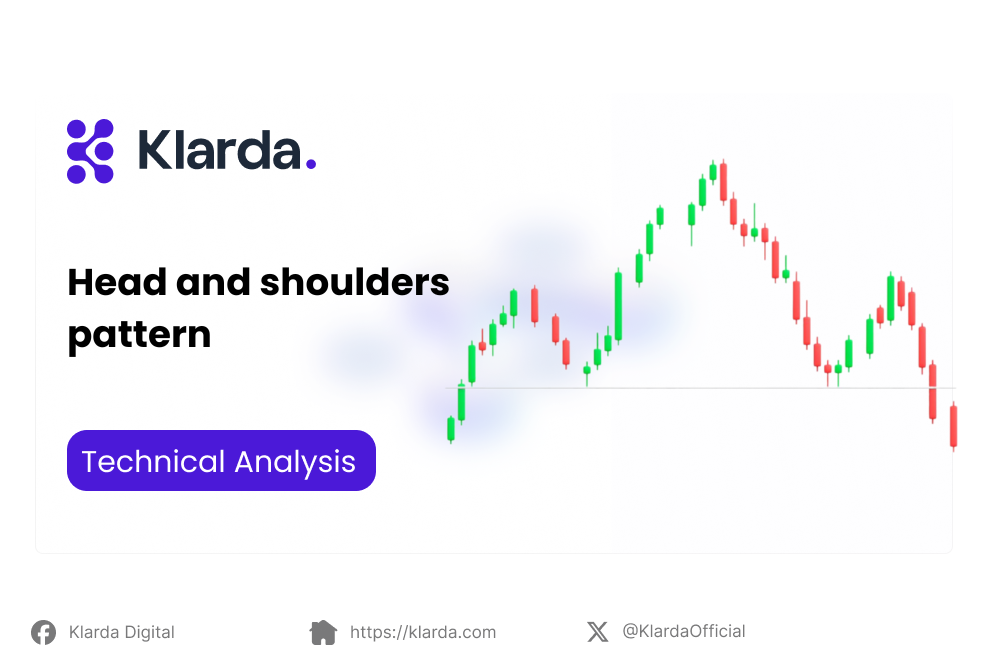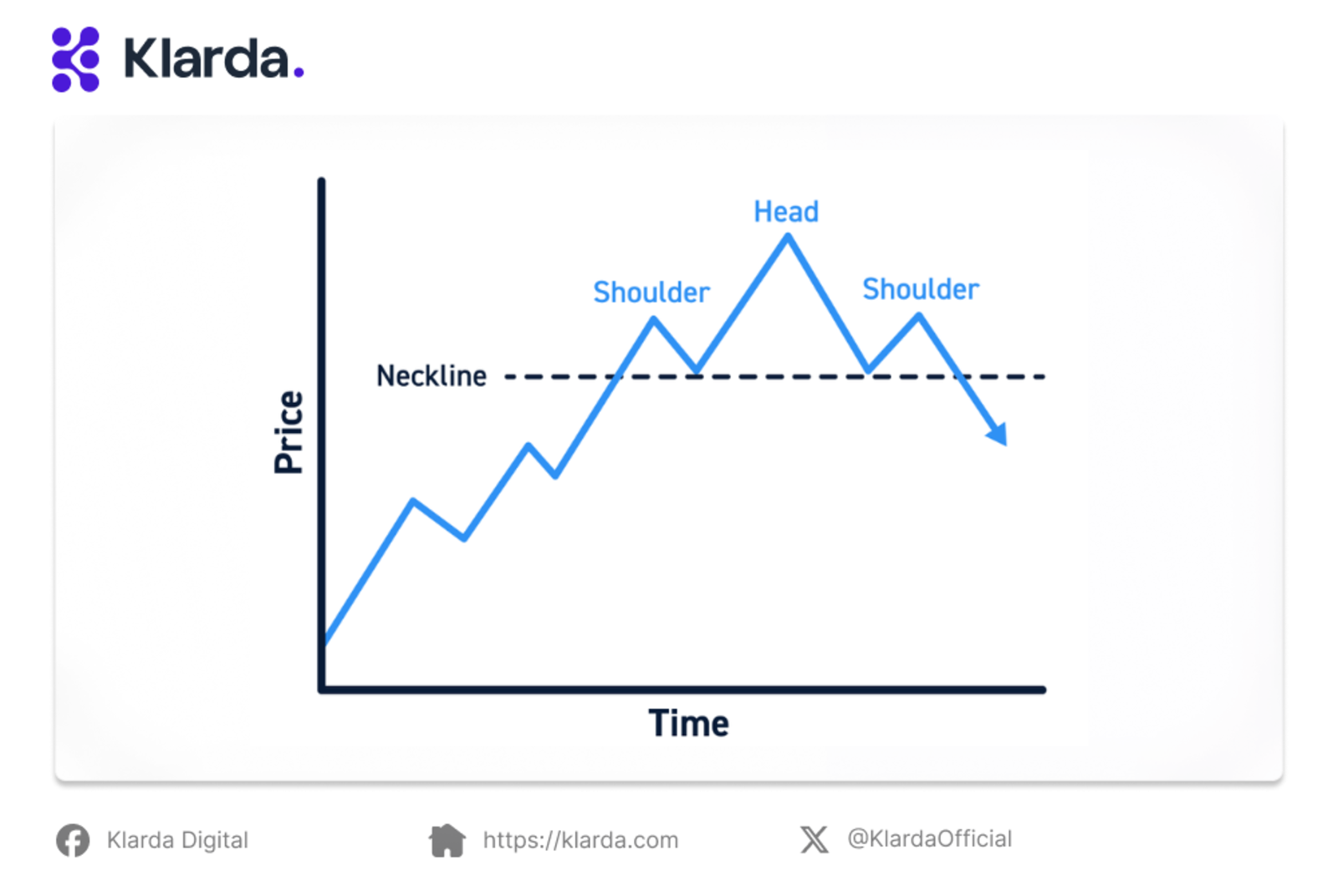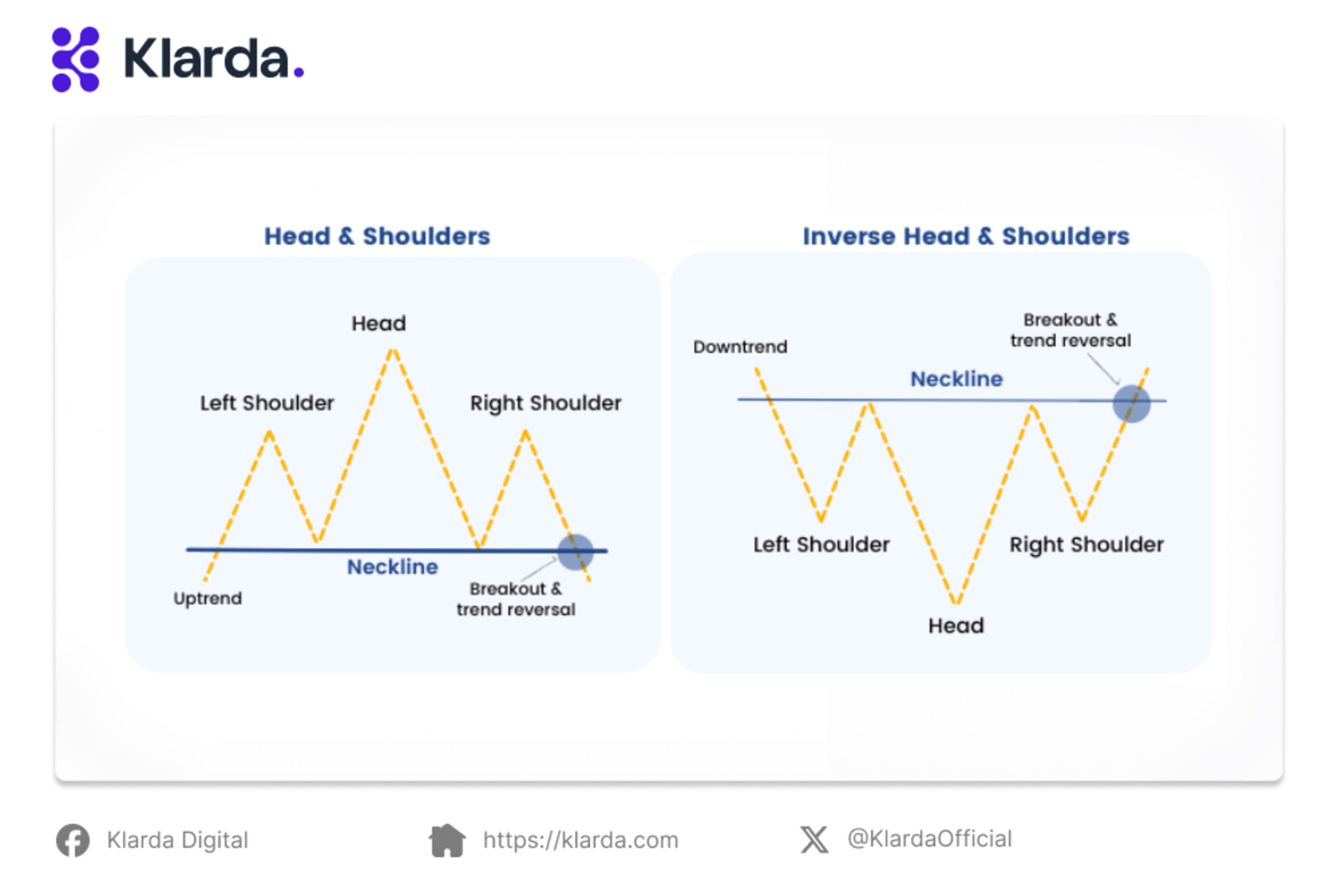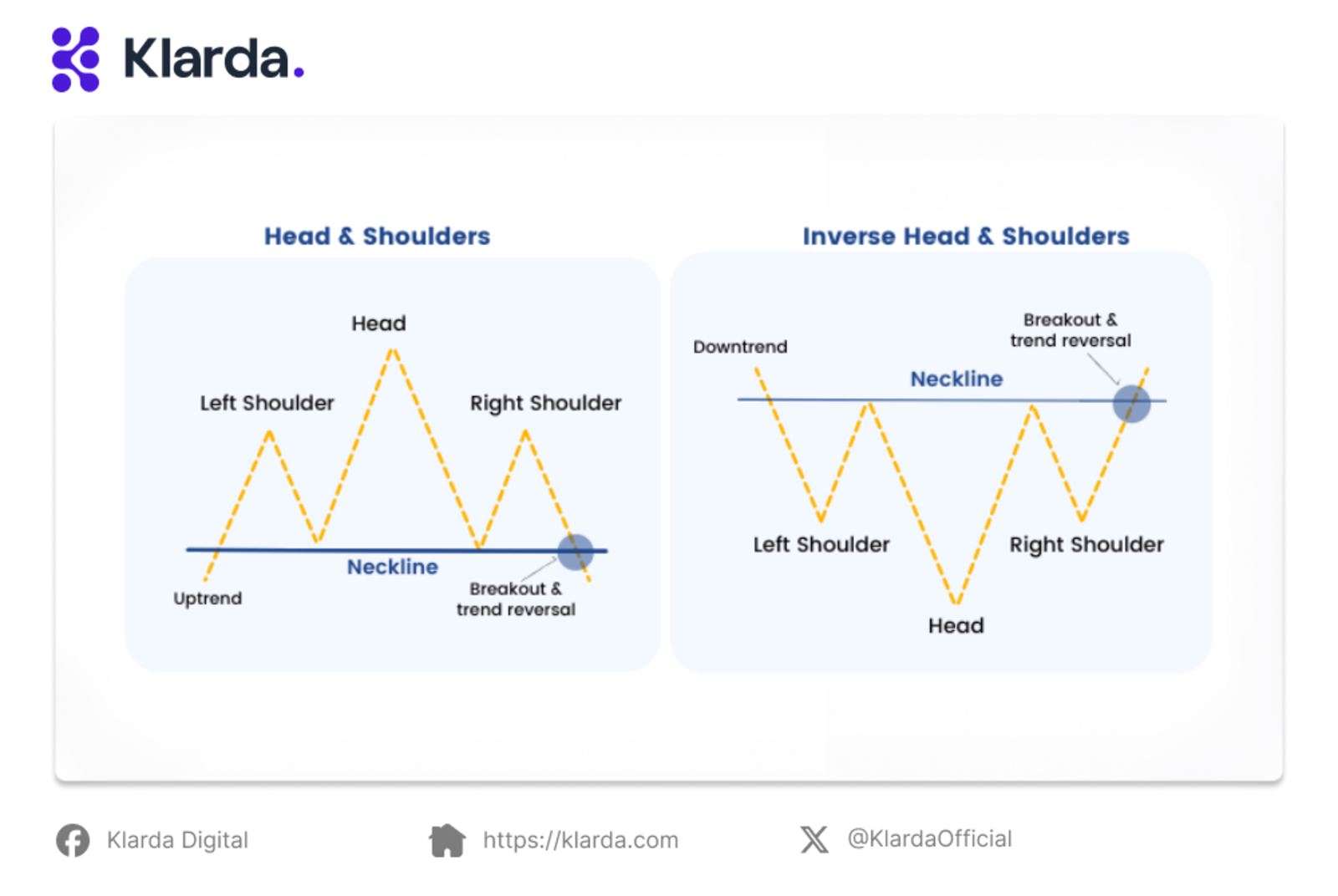Head And Shoulders Pattern
Learn about the head and shoulders pattern, its key characteristics, trading strategies, and how to effectively utilize it for market analysis.
The head and shoulders pattern is a powerful technical analysis tool used to identify trend reversals. This article explores its formation, significance, and how to effectively apply it in trading strategies.

KEY TAKEAWAYS
- A head and shoulders pattern is a technical chart formation characterized by three peaks: the two outer peaks are roughly equal in height, while the middle peak is the tallest.
- This pattern is widely regarded as a dependable indicator of a trend reversal from bullish to bearish.
- It suggests a reversal from bearish to bullish.
- The neckline in this pattern aligns with the support or resistance levels, depending on the direction of the trend.
WHAT IS HEAD AND SHOULDERS PATTERN?

What is head and shoulders pattern?
In technical analysis, the head and shoulders pattern is a distinctive chart formation that forecasts a reversal from a bullish to a bearish trend. It consists of a baseline with three peaks, where the two outer peaks are roughly the same height, and the middle peak is the tallest.
This pattern develops when a stock's price rises to a peak and then falls back to the base level of the preceding uptrend. It subsequently rises again, surpassing the initial peak to create the "head," and then declines back to the same base level. The price then rises once more to form a final peak, which is approximately at the level of the first peak, before dropping again.
The head and shoulders pattern is highly regarded for its reliability in signaling trend reversals. It is among the key chart patterns used to indicate the potential end of an upward trend.
COMPONENTS OF THE HEAD AND SHOULDERS PATTERN

Key components of the head and shoulders pattern
A head and shoulders pattern consists of four key components:
- First Peak: Following a prolonged bullish trend, the price reaches a peak and then declines to create a trough.
- Head: The price rises again to form a second peak, which is significantly higher than the initial peak, before declining once more.
- Second Shoulder: The price rises a third time to approximately the level of the first peak and then falls again.
- Neckline: This is drawn by connecting the two troughs (or peaks in the case of an inverse pattern).
In this pattern, the first and third peaks are known as the shoulders, while the second peak represents the head. The neckline is the line connecting the two troughs (or peaks in the inverse pattern).
HOW TO TRADE THE HEAD AND SHOULDERS PATTERN?

Head and Shoulders Pattern vs Inverse Head and Shoulders Pattern
To trade the head and shoulders pattern effectively, traders should wait for the pattern to fully complete, as incomplete or partially formed patterns might not fully develop. Avoid making trades based on incomplete patterns; instead, monitor them until the neckline is breached.
- Head and Shoulders Pattern: Enter a trade when the price falls below the neckline after the right shoulder has formed.
- Inverse Head and Shoulders Pattern: Enter a trade when the price rises above the neckline after the right shoulder has formed.
Once the pattern is complete, plan the trade by specifying entry points, stop-loss levels, and profit targets. Consider any factors that might affect your stops or targets. The most common entry point is when the price breaks through the neckline, signaling a trade.
Alternatively, a more conservative approach involves waiting for a pullback to the neckline after a breakout has occurred. This method may risk missing the initial move but allows for confirmation of the breakout direction if the price resumes its movement after the pullback.
ADVANTAGES AND DISADVANTAGES
Advantages
- Easy Identification: Experienced traders can quickly recognize the head and shoulders pattern due to its distinct structure.
- Clear Profit and Risk Management: Entry and exit points, along with stop-loss levels, can be clearly defined with confirmation openings and closings.
- Potential for Significant Profits: The pattern’s longer time frame allows for substantial market movements from entry to exit.
- Versatility Across Markets: The pattern is applicable in various trading markets, including forex and stocks.
Despite its reliability, the pattern does not guarantee a trend reversal.
Disadvantages
- Risk of Overlooking: Novice traders might miss the pattern if the neckline is not perfectly flat or appears skewed.
- Large Stop-Loss: Extended downward movements can lead to sizable stop-loss distances.
- Neckline Variability: Price pullbacks may retest the neckline, potentially causing confusion for traders.
THE BOTTOM LINE
The head and shoulders pattern is a valuable tool for identifying price reversals. In a bearish head and shoulders pattern, three peaks form, with the central peak being the highest, signaling a potential reversal of an uptrend.
However, caution is crucial, as misidentification and market volatility can lead to false signals. Always consider other market factors and apply proper risk management techniques to strengthen this trading strategy. To address these challenges and enhance your trading decisions, sign up with Klarda today!
Updated 8 months ago